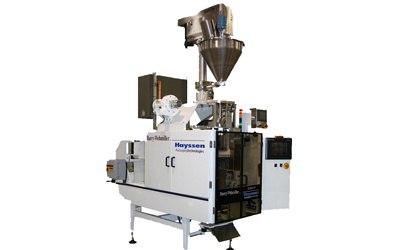So, you have purchased a vertical bagger (or will be doing so soon) for your packaging line. You are excited to be moving forward with this project.
Packaging your products with a vertical bagger is the correct application for your product, and you are ready to start bagging items ASAP.
But you don't know how to feed a vertical bagger. You want to know how to feed one of these devices.
And you want to understand how to do this before the bagging machinery is delivered, installed, and set up on your packaging line.
But, where can you find out how to feed a vertical bagger? The answer, of course, is here at Industrial Packaging.
In this article, we will explain how to feed a vertical bagger. After reading this article, you will know how to complete this process.

How To Feed A Vertical Bagger
One of the most important ways to prepare for running your new vertical bagger is to learn how to feed your new bagging machinery.
While there are many different brands and types of vertical baggers, for the most part, the process of feeding these devices is relatively similar from one machine to the next.
The section below will outline the steps required to feed a vertical bagger. This will allow you to hit the ground running when your vertical bagger is delivered and installed on your packaging line.
Step One: Filling Your Vertical Bagger Hopper
The first step to feeding a vertical bagger is to fill the machinery's bin (also known as a hopper) with the products you will be packaging.
Depending on your product, this is a relatively simple process. First, you must acquire a container of the products you are looking to bag.
Next, you need to pour these products into the bin or hopper on your vertical bagger. You are now ready to move on to the next step.
Step Two: Transporting Your Product To The Weight Scale Unit On Your Vertical Bagger
The next step in this process will involve a conveyor, elevator or some other similar device that is designed to transport your product from the hopper.
Your products will be moved from the hopper via the conveyor or related device to your weight scale unit, which, for the most part, sits above your vertical bagger.
Here at Industrial Packaging, we use a bucket-type weight scale unit from the Yamato brand. These are a better choice for more solid products like hard candies, gum balls, peanuts as well as plastic game pieces.
This process may be fully automated or may involve some activity from one of your vertical bagger machinery operators.
Need help buying packaging machinery?
Step Three: Dispense Product Via Auger To Secondary Hopper On Vertical Bagger
Once the product has reached the weight scale unit, the unit will dispense the desired amount of product via an auger to the next stage of the machinery.
The auger looks a bit like a corkscrew and allows the product to fall from the top of the auger to the bottom with the proper amount of product dispensed from the corkscrew into a secondary hopper.
For example, if you were packaging sugar, you would pour the sugar into the hopper. The sugar would be transported from the first hopper via conveyor or elevator to the weight scale unit.
Next, the sugar would be dispensed from the weight scale unit via the auger in the proportion of product that you have decided you want for each bag.
You can program the weight scale to dispense whatever sized portion you want, which will be dispensed by the auger into the flexible bagging material you have chosen to run on your equipment.
In the case of the sugar mentioned above, this will be a specific number of grams based on the amount you want per bag.
These metrics can be programmed into your vertical bagger with fine precision, resulting in perfectly portioned bags of sugar.
Step Four: Secondary Hopper Fills Your Bag On Vertical Bagger
After the product has made its way down to the secondary hopper in the appropriate portion, it moves from the hopper into the flexible bagging material you are running on your machinery.
Every bag will be filled with the exact amount of grams of product that you have programmed into the machinery.
The types of flexible bagging materials you can run for these applications include bagging such as poly bags, cloth bags, flexible pouches, and other forms of flexible bagging.
From here, the product will move via conveyor or similar device to the next stage in your packaging line, where the portioned bags of products will be packed for shipping and transportation.
Are You Looking For A Vertical Bagger Or Flexible Bagging Materials?
After reading this article, you should have a solid grasp of the basics of feeding a vertical bagger. If you have already purchased a vertical bagger, this article should be helpful to you when working on feeding your equipment.
But, if you do not already have a vertical bagger and are interested in getting pricing for this machinery and the flexible bagging materials that you would run on this equipment, we can help.
Please get in touch with one of our packaging experts if you would like more information on vertical baggers and flexible bagging, such as more in-depth instructions, pricing, or brand and model comparisons.
They will be able to answer any questions you have about vertical baggers and the materials that you will need to run on this type of packaging machinery.
About Nathan Dube
As the Digital Marketing Specialist at Industrial Packaging, I am honored to create content for such a phenomenal company and work with one of the greatest teams in the Packaging Industry. Whether creating a video, writing blog posts or generating other pieces of content and multimedia, I am always excited to help educate and inspire our prospects and clients to reach their highest potential in regards to their packaging processes and needs.




